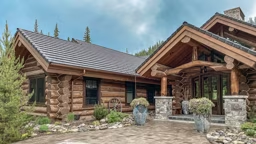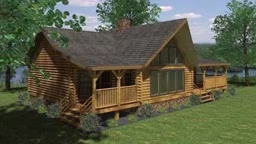
The past few years have been tough, to say the least. We’re ready to rejoin the world, but we’re still a little skittish in close quarters, like movie theaters and public gyms. As a result, we’re still looking to our homes to provide a safe space not only for family and friends to enjoy, but also to rejuvenate ourselves — mind, body and soul. Building an accessory dwelling unit, or ADU, can accomplish these objectives and bring a little “ahhh” into our lives.
ADUs are a hot trend, but they are far from new on the housing market. You may know them by names like casita, backyard bungalow or even granny flat. These places are almost always separate, self-contained, detached or semi-detached buildings that often include the basics of any house (think: kitchen, living area, bedroom and bath), but on a smaller scale.
“We have two current projects that have ADUs — one in Idaho and one in Wyoming,” recalls Matt Franklin, lead architect at M.T.N Design in Meridian, Idaho. “One client even lived in their ADU while their main home was under construction.”
While ADUs are typically smaller, usually within the 800- to 1,000- square-foot range, don’t expect them to be inexpensive, Matt advises. “Typically, they are more expensive per square foot than the main structure because you don’t get the economies of scale that you do with a larger space.”
Though they may not be cheap to build, they can pay for themselves. ADUs often are used as sources of rental income or as future retirement homes, where the homeowners downsize to the ADU, then rent out the larger, main residence to help fund their golden years.
The key to an ADU’s success is its design. Incorporating log and timber frame building systems and other rustic features will help it stand out from other units, according to Michael Grant, principal of Modern Rustic Homes in Ellijay, Georgia.
“I tell people that if you build in the charm, they will come. I built a guest house which I turned into an Airbnb. It has nearly 100 percent occupancy,” Michael says. “I’ve learned that you develop a following of past guests that share their appreciation of your property with friends and family. Amenities like outdoor fireplaces are mood setters; people love them.
“We’re also doing more casitas that are physically connected to the house with a private entrance, mini kitchen and access to a courtyard,” Michael continues, reinforcing the versatility of the concept.
That being said, there are some restrictions that come with these structures, so it is essential to know what you are and are not allowed to build before you get serious about your plans.
Know the Code.
Log and timber homes often are built on vast pieces of land, so you may think that you automatically have the right to build an ADU within your property lines. However, that is not always the case. Some jurisdictions have limitations on how many residential structures can be built on a parcel and/or require minimum lot sizes and setbacks, as well as have maximum occupancy caps. So, before you think about breaking ground, you’d be wise to pay a visit to your local planning office to learn what’s possible.
Once you get the all-clear, the process for adding an ADU to your property is much the same as it was for building your primary house. All plans must be engineered for the site, permitted and approved by your local building inspector along key milestones.
How would you use it?
The reasons to put an ADU on your property range from the practical (housing an aging parent, earning passive income in retirement or enjoying an expansive at-home office) to playful (adding a boat house on a lake, meditating in a Zen yoga studio or enjoying a tricked-out man cave or she shed). Its flexibility and usage strongly depend on the way you design and outfit it. These decisions are shaped by your needs and budget, of course, but also lifestyle. An ADU can be an excellent alternative to adding onto a log or timber frame structure while still expanding your enjoyment of your home.








_11868_2024-09-17_08-44-256x288.avif)


